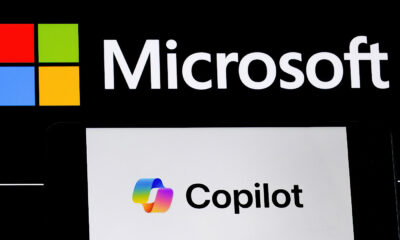MARKETING
Consumer Behavior Statistics You Should Know in 2022 [New Data]
![Consumer Behavior Statistics You Should Know in 2022 [New Data] Consumer Behavior Statistics You Should Know in 2022 [New Data]](https://articles.entireweb.com/wp-content/uploads/2022/03/Consumer-Behavior-Statistics-You-Should-Know-in-2022-New-Data.jpgkeepProtocol.jpeg)
How consumers make purchasing decisions has changed greatly in just a few months. For instance, the pandemic has shifted some buyers more online.
In recent years, there has also been a push for more transparent and sustainable practices in brands. But what else is there? Well, that’s what we’re covering here.
In this article, you’ll learn some interesting statistics regarding consumer behavior that you should know in 2022 and what that means for your marketing strategy.
1. Consumers buy more online.
According to a 2022 GWI Commerce Report, there has been a 36% increase in the number of Americans doing most of their household or grocery shopping online.
During the 2021 holiday season, 46% of consumers shopped exclusively online according to a Jungle Scout report.
Why? The top reasons are lower prices, low-cost shipping, and convenience.
Back in 2020, NRF’s Winter 2020 Consumer View reported that 83% of shoppers say convenience while shopping is more important compared to five years ago. That was before the pandemic, so that percentage has likely increased.

This shift has forced some brick-and-mortar stores to consider how to implement an ecommerce strategy, whether it’s launching their own online stores or partnering with third-party platforms.
There’s also a bigger need for a robust online presence. While this was always recommended for brands, nowadays, it’s vital for their long-term growth.
2. Reviews and user-generated content are more influential than ever.
Today, it seems like everyone is talking about influencer marketing.
When we surveyed over 1,000 global marketers in 2021, 61% of B2C marketers said they planned to increase their investment in influencer marketing, compared to only 44% in UGC.
However, some studies suggest that the opposite strategy may be more effective.

According to a 2021 Stackla report, UGC is 8.7 times more impactful than influencer content and 6.6 times more than branded content.
In fact, when it comes to sourcing gift ideas on social media, the Jungle Scout revealed that 56% of consumers are influenced by posts shared by friends and family – more than branded content and ads.
From a marketing perspective, this is a signal to brands that consumers want to hear more from other buyers. Consider implementing this into your social strategy by sharing customer reviews and promoting UGC through giveaways and other promotional tactics.
While it’s a great brand discovery tool, it also works well to reel in consumers at the consideration stage of the buyer’s journey.
3. Consumers seek personalization.
According to the Stackla report, 70 percent of consumers say it’s important for brands to offer a personalized experience – up from 67 percent in 2019.
HubSpot Blog Research from 2021 revealed that 53% of marketers leverage message personalization in their email marketing strategy. Of that percentage, 72% say it’s been one of the most effective tactics, more than subscriber segmentation, email automation, and dynamic content.
However, there are many more ways to personalize a user’s experience beyond personalization tokens – from product recommendations and usage recaps (think Spotify’s annual “UnWrapped” campaign) to smart content and 360 customer views.
With so many channels to reach audiences, marketers have a wealth of options when it comes to personalization. It’s just a matter of narrowing down the ones that offer the best ROI.
4. Gen Z leads the charge in social buying.
In May 2021, eMarketer found that Gen Zers are more likely to engage in social commerce than older generations.
Their report revealed that roughly 56% of consumers between 18 and 24 years old and 47.5% of 14- to 17-year olds have made at least one purchase on a social platform.
These figures are considerably higher than other generations, with only a third of consumers between 45 to 65 years of age making at least one purchase on social media in the year.
Which platforms is Gen Z mostly on? TikTok and Instagram.
A 2022 GWI Gen Z report found that 46% of Gen Zers use TikTok to find information about products and brands while 69% use Instagram.
This is likely because Instagram has slowly transitioned to an ecommerce platform with advanced shopping tools while TikTok has kept its focus as a short-form video platform.
So, what are Gen Z buyers looking for? On social media, the GWI report found that most are looking for content that’s:
- Lighthearted and funny
- Inspirational
- Informational and helpful
As for their purchasing journey, the number one way Gen Z discovers and researches products is through vlogs (video blogs), according to the GWI report. Once they’ve made a purchase, they become most loyal to brands that offer access to exclusive content or services.
So, if your target audience includes Gen Z, your social media presence will be more important than ever.
5. Brands can benefit from an omnichannel approach.
In a March 2020 eMarketer study of how U.S. adults preferred that brands communicate with them, email came out on top alongside TV advertising. Social media posts came in third and text messages next.
What this data suggests is that a single-channel strategy is not enough to attract and retain consumers.
Their attention is being pulled in many different directions and if your brand isn’t present, you may quickly be forgotten.
Now, this isn’t to say that every brand should be utilizing every single channel out there. Because after all, not every channel will offer a positive return on investment. What we are suggesting is consistently leveraging a mix of one to three channels while staying updated on how your audience is responding.
Some channels may work well during specific stages in the buyer’s journey and some may work only for a time. Listening to your data is the best way to know which channels are worth your time and effort.
6. Shoppers expect BNPL options.
Buy-now-pay-later is a payment service that allows customers to spread out their purchase payments into interest-free installments.
The topic started rising in popularity around mid-year in 2020 but peaked in September 2021, according to Google Trends.
In 2020, Paypal launched its own payment installment plan and during the 2021 Black Friday, they had a nearly 400% increase in BNPL transactions year-over-year.
Although one CNBC report found that only 7% of shoppers planned to use BNPL this past holiday season, experts expect that figure to double or triple in 2022.
It’s particularly popular with Gen Z – a population that is only now starting to join the workforce. The 2022 GWI report found that one in five Gen Z shoppers in the Asia-Pacific region used a BNPL service in the last month.
Payment is often not something marketers think about when advertising a brand’s products and/or services. However, this data suggests it may be helpful to highlight this as it’s becoming a stronger purchasing consideration for consumers.
7. There’s more demand for sustainable brands.
In 2019, the Harvard Business Review reported that sustainable products are five times more successful in average sales growth compared to brands that aren’t marketed as such. Today, that trend continues to grow.

A Global Sustainability Study 2021 report found that one third of consumers are willing to pay a premium for sustainable products.
In fact, 61% of Gen Z say they pay more for eco-friendly products than those that aren’t, according to the GWI report. Specifically, online shoppers are looking for:
- The use of natural, organic materials
- Recycled or recyclable items
- Brands in which part of the proceeds go to eco-friendly causes
- No harmful chemicals
- Durability
Many brands may offer one or more of these but fail to advertise them. However, this is what can help set you apart from the competition, as sustainability becomes a growing purchasing factor for consumers.
Now that you know what’s influencing consumer behavior, you can begin to craft a marketing strategy that appeals to your audience’s most pressing needs.
Source link

![Consumer Behavior Statistics You Should Know in 2022 [New Data] ecommerce planning template](https://articles.entireweb.com/wp-content/uploads/2022/01/10-Best-Online-Payment-Methods-for-Businesses.png)

















You must be logged in to post a comment Login